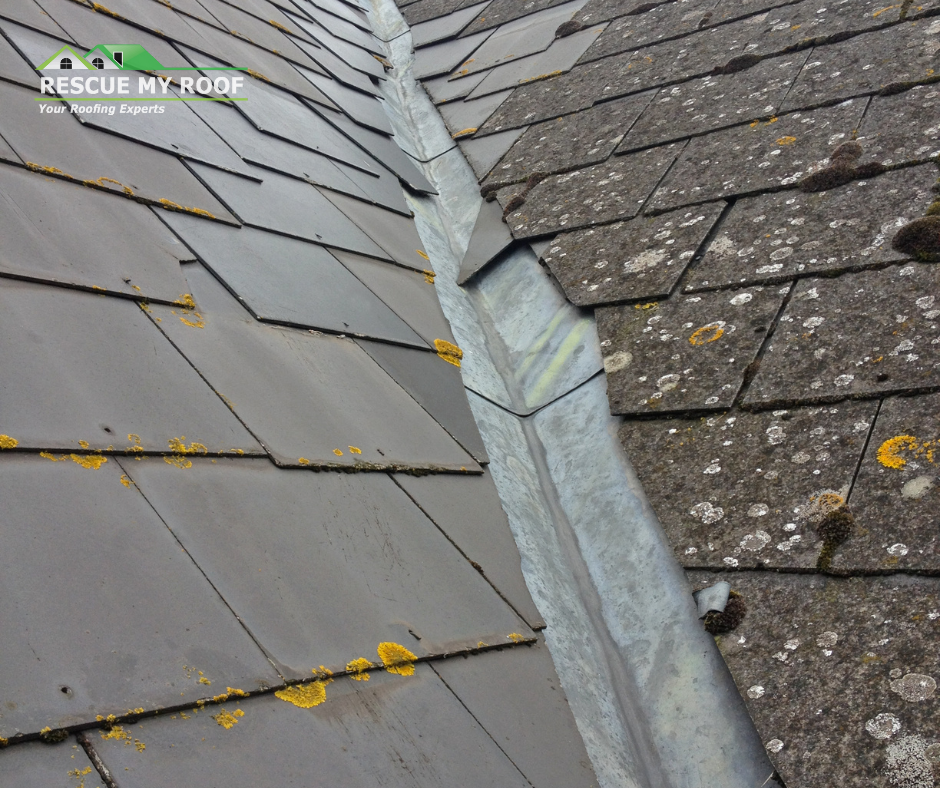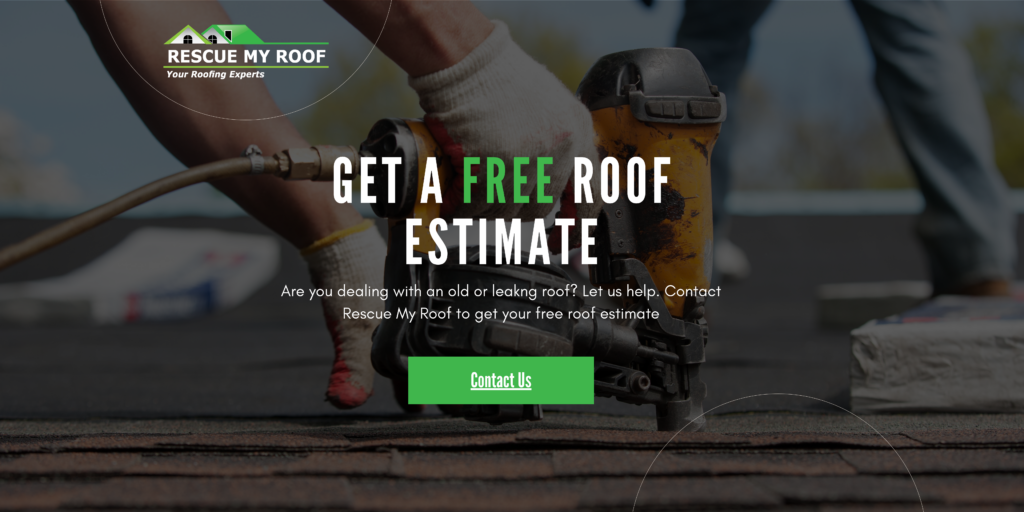4 Types of Roof Valleys: Choosing the Right One for Your Home
Roof valleys are an essential part of a roofing system, helping to direct water runoff away from your roof and into your gutters. As one of the most vulnerable areas of your roof, valleys need to be installed properly and with durable materials to prevent leaks and water damage.
There are several types of roof valleys, each with its advantages and disadvantages. So how do you choose one?
For over a decade, Rescue My Roof has been a leading educator in the roofing industry. We’ve helped thousands of homeowners make educated decisions about their roofs. We’re here to help you, too.
In this article, we’ll explore the different types of roof valleys, how they work, and, ultimately, how to choose the right option for your home.
What Is a Roof Valley?

A roof valley is the area where two roof slopes meet, creating a “V” or channel that allows water to flow off the roof. Valleys are particularly important in areas that experience heavy rain or snow, as they help prevent water from pooling on the roof.
Valleys can be one of the most leak-prone areas on a roof because they collect and channel a large volume of water. Proper installation and regular maintenance are essential to ensure that the valley can handle this water without causing leaks.
The Different Types of Roof Valleys
There are several types of roof valleys, each designed with a specific purpose and aesthetic in mind. The most common types of roof valleys include:
- Open Roof Valley
- Closed Roof Valley
- Woven Roof Valley
- California-Cut Roof Valley
Let’s break down each of these types and their pros and cons.
1. Open Roof Valley

An open roof valley is one of the most common types used in modern roofing. In this design, the valley is left open, with a visible metal flashing running down the middle of the valley to guide water flow. The shingles on either side of the valley are cut and installed along the edge of the metal flashing, leaving the center exposed.
Pros:
- Efficient Water Drainage: Open valleys are excellent at handling heavy rainfall, as the metal flashing provides a clear path for water to flow off the roof.
- Durability: Metal flashing is highly durable and long-lasting, especially if made from materials like galvanized steel, aluminum, or copper.
- Less Debris Buildup: Because the valley is open, it’s less likely to collect debris, such as leaves and twigs, which could block the flow of water.
Cons:
- Higher Cost: Open roof valleys can be more expensive due to the cost of the metal flashing.
- Aesthetic Consideration: Some homeowners may not like the appearance of the exposed metal flashing, especially if they prefer a more seamless look.
2. Closed Roof Valley
A closed roof valley is designed to hide the valley under layers of shingles. The shingles from both roof slopes are woven together or cut and overlapped, creating a seam that directs water flow without any exposed metal. There are two main types of closed valleys: woven and California-cut (more on those below).
Pros:
- Smoother Appearance: Closed valleys offer a more seamless, continuous look across the roof, which many homeowners find visually appealing.
- Lower Cost: Since there’s no need for metal flashing, closed valleys tend to be less expensive to install than open valleys.
Cons:
- Water Drainage: Closed valleys may not handle water drainage as efficiently as open valleys, especially in areas with heavy rainfall.
- Debris Accumulation: Closed valleys can trap debris more easily, leading to potential blockages and water pooling, which could eventually cause leaks.
3. Woven Roof Valley
A woven roof valley is a type of closed valley where the shingles from each side of the roof are “woven” together, interlacing over the valley line. This type of valley is often used with three-tab asphalt shingles.
Pros:
- Durable Seal: The weaving of the shingles creates a tight, interlocking seal, which helps prevent water from seeping through.
- Seamless Look: Woven valleys create a clean, uniform appearance, as there are no visible cuts or seams.
- Cost-Effective: Woven valleys don’t require additional flashing, making them a cost-effective option.
Cons:
- Labor-Intensive Installation: Woven valleys require more time and precision to install correctly, which can increase labor costs.
- Material Limitations: This method is generally not recommended for heavier or laminated shingles, as they can create an uneven surface that disrupts the smooth flow of water.
4. California-Cut Roof Valley
The California-cut roof valley is another type of closed valley. In this design, the shingles from one side of the roof run through the valley, while the shingles from the other side are cut along the valley’s centerline and laid on top of the first set of shingles. This method provides a slightly different look and allows for easier installation compared to woven valleys.
Pros:
- Aesthetic Flexibility: The California-cut valley offers a cleaner, more streamlined appearance than some other types of valleys.
- Simpler Installation: This method is easier and faster to install than a woven valley, making it a good choice for roofers looking for efficiency without compromising performance.
Cons:
- Potential for Water Seepage: If not installed properly, the cut edge of the shingles can become vulnerable to water seepage, which could lead to leaks over time.
- Limited Material Compatibility: Like the woven valley, this method works best with lightweight shingles like asphalt, but it may not be suitable for heavier roofing materials.
Choosing the Right Roof Valley for Your Home
When deciding which type of roof valley to install, there are several factors to consider:
- Climate: If you live in an area that experiences heavy rainfall or snow, an open roof valley may be the best choice due to its superior water drainage capabilities. In milder climates, a closed valley may work just as well.
- Roofing Material: Certain types of roof valleys work better with specific roofing materials. For example, woven valleys are often recommended for three-tab asphalt shingles, while open valleys with metal flashing are better suited for heavier roofing materials like tile or slate.
- Aesthetic Preferences: If you prefer a clean, seamless appearance, a closed or woven valley may be more appealing. If performance is your top priority, an open valley with metal flashing could be the way to go.
- Cost Considerations: While open valleys are generally more durable, they can also be more expensive due to the cost of the metal flashing. Closed valleys tend to be more affordable, but they may require more maintenance over time.
Finding the Best Roof Valley for Your Home
The type of roof valley you choose can have a significant impact on the performance, durability, and appearance of your roof. Each type of valley has its advantages and disadvantages, so it’s important to consider factors like climate, roofing material, and your aesthetic preferences before making a decision.
If you’re unsure which type of roof valley is best for your home, consult a professional roofing contractor to guide you through the options and ensure proper installation.
No matter which type of valley you choose, regular inspections and maintenance are key to keeping your roof valley—and the rest of your roofing system—in good condition for years to come.
Learn more with “W Valleys vs. Other Valleys: What’s Best for Your Roof” and “Unveiling Roof Leaks: Exploring the Most Common Culprits.”
Is your roof old or leaking? Dealing with roofing problems can be frustrating – that’s why Rescue My Roof is here to help. Contact us today to get a FREE estimate.


